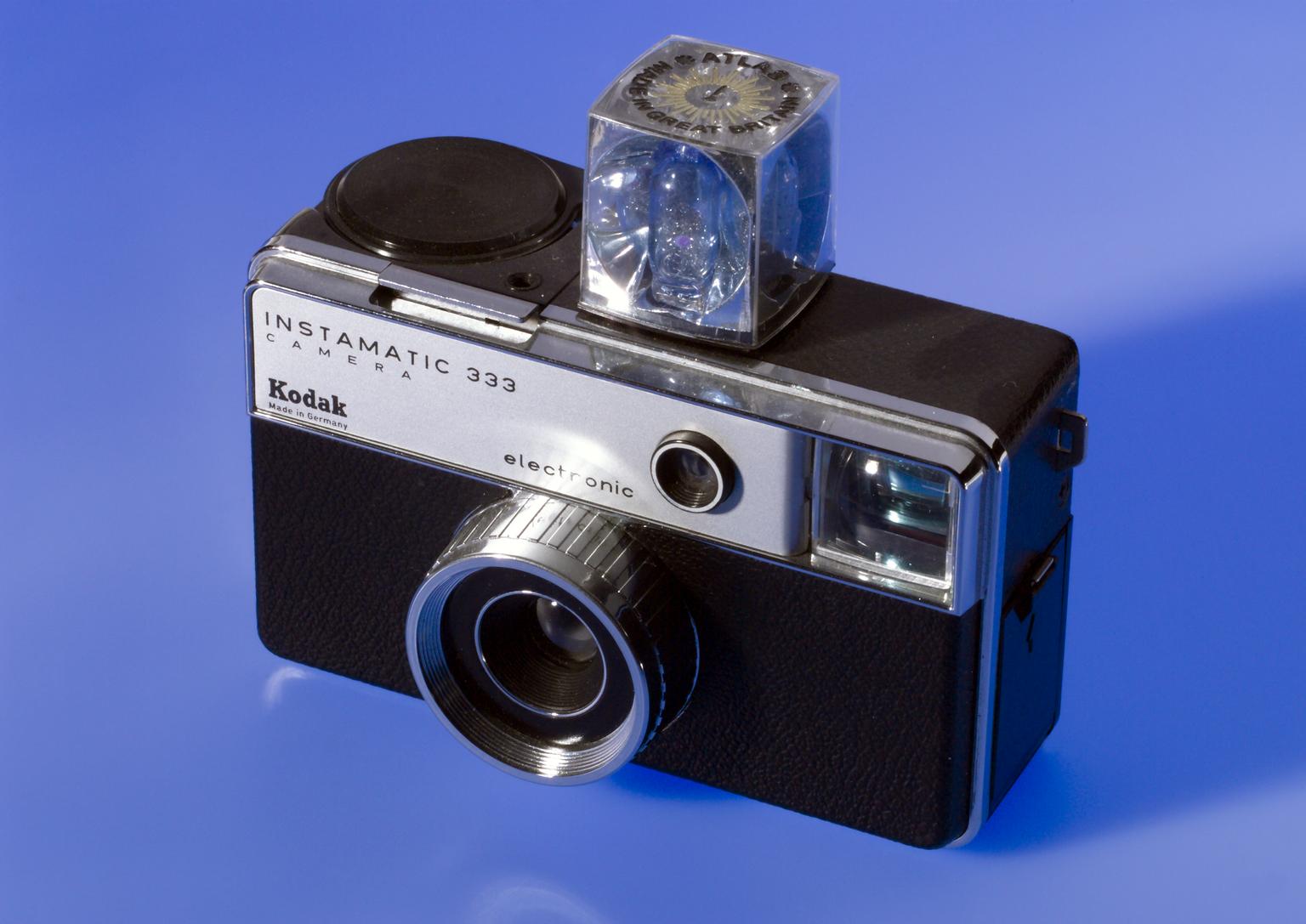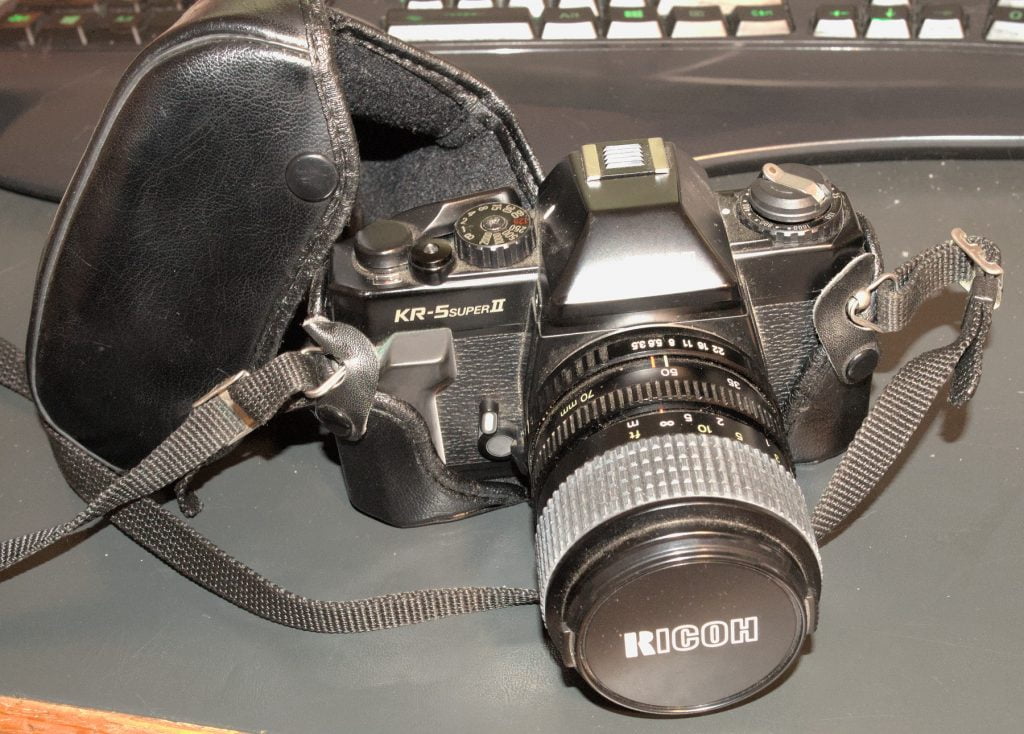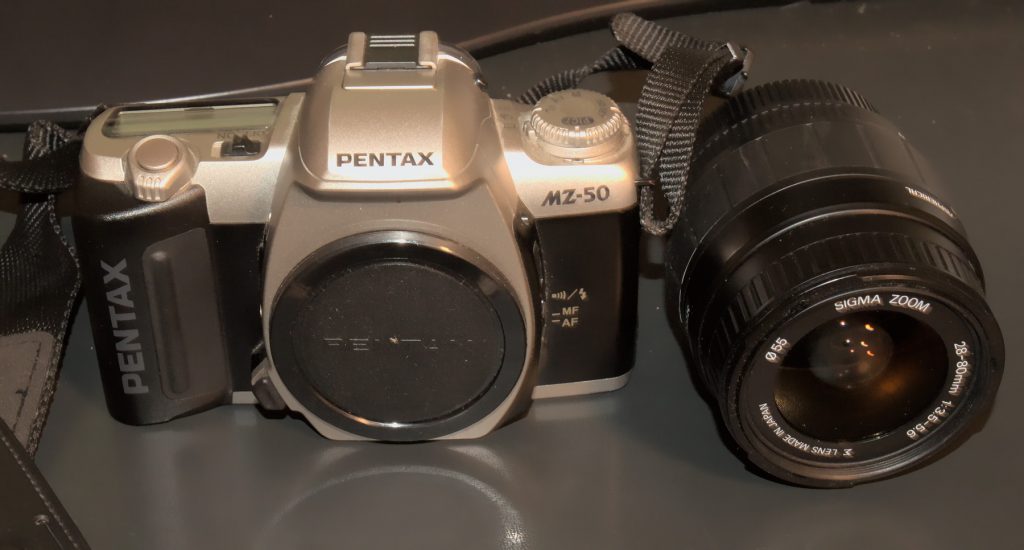The pre-digital story
I thought I would do a little bit on my journey through photography. At least to the extent that journey is documented by my gear, anyway. So, this is part 1, looking at my pre-digital forays into the photographic arts. I’ll do part 2 in a later week.
My first camera
My camera journey started out with a Kodak Instamatic film camera, which were pretty indestructible things, but very limited in what you could do. I’m pretty sure I still have some prints from my old instamatic kicking around somewhere, although I expect they’ll all have faded and colour-shifted by now. The chemical flash cube was a pretty amazing thing (but I seem to recall it was also pretty expensive – you used flash sparingly).
I don’t remember mine being in any way electronic, so I imagine this was probably a later iteration of the concept. I could be very wrong on that, however.

I don’t recall when I got the instamatic, although it was a gift from my family when I was still a child. I would guess probably in the late 1970’s. I couldn’t hazard a guess how long I used it for, or how many photos were taken on it. At some point during the 1980’s, it was put away and never used again.
First Upgrade
During the early 1990’s, I decided to buy myself a real camera. My father was a Pentax shooter, although I have no recollection now what equipment he had. I remember he had a Pentax film camera, and that’s about it. I think my brother may still have that camera, though. I couldn’t afford a Pentax SLR, so I bought a Ricoh SLR instead. They used the Pentax lens mounts (the K-mount), but at the time they were a completely independent brand. Ricoh bought the Pentax camera business in 2011 and they continue to make Pentax cameras, although rumours surface regularly about them pulling out of the business.
I bought (and still have) a Ricoh KR-5superII fully manual 35mm film camera. It had real, interchangeable lens and much more flexibility for taking the shot in a variety of situations. The kit lens that came with it was a Ricoh 35-70mm f3.5-4.8 macro. I bought a battery powered hot-shoe mount flash to go with it, and at some point as a gift (I think from my family) I was given a proper tripod (a Velbon CX-530, which I still have and still use). Searching the web indicates that the replacement model was released in 1994, but that this camera remained available for a couple of years. I guess I bought mine in 1993 or 1994.
My lens selection wasn’t great, and I had no real concept of the difference in quality gear, so most of what I had was very basic. I bought a second-hand medium telephoto zoom (a Tokina 80 – 200mm f4.5 – 5.6 macro) at some point and I think it was for this camera because it doesn’t have autofocus capability, which I would have been keen on if I’d bought it to go with the next camera. I didn’t have much in the way of expectations for my photography, so I was reasonably happy with it. My previous camera was an Instamatic, so what can I say – it was a big step up. The trouble with film, of course, was that you have basically no opportunity to realise if you’ve stuffed the shot up, and frustratingly I had a habit of getting the odd out-of-focus shot. I blame my out-of-focus eyes – my story and I’m sticking to it.

Interestingly enough, I have just discovered this camera still has film in it. Unfortunately I found out by opening the case, so if it was still any good I have probably just ruined it. I wonder what was on it? One of the downsides of this camera is that there isn’t any external indication if there is film in it – you need to wind the film on and listen for the sound of film moving and feel the resistance on the winding lever to know. Having not used the camera for so long I didn’t know what I was feeling or hearing. I should probably take some photos to use up the rest of the film and get it processed to see what was there. I wonder if I can remember how to drive a manual camera… I cannot imagine that camera has been used for a good 15 years or more. On the bright side, despite being 30 years old, it still appeared to take a photo quite happily – the beauty of a mechanical shutter and film movement.
Second Upgrade
Having enjoyed my Ricoh, when it came time to upgrade I only considered Pentax cameras. Pentax by that stage had released their range of “prosumer” fully automatic cameras. Still film, but in just about every other way the equivalent of the modern fully automatic DSLR. The MZ-50 had some nifty features, and was quite an advanced camera for its time. Automatic focusing, exposure control, film winding, the works. Nowhere near as advanced as modern ones, obviously, but very good for its time. It also included an on-board flash, so the hot-shoe mounted separate flash unit only became necessary where a stronger flash was required. This was a feature of my subsequent Pentax digital cameras as well.
While I rave about this camera, don’t get me wrong. It wasn’t the only fully-automatic film camera out there – Nikon definitely had its equivalent, and I imagine the other major camera producers did too. The Pentax MZ-50 was the almost-penultimate Pentax “prosumer” film camera, though. According to the web, it was released in 1997, so I probably bought mine in 1997 or 1998. They released an MZ-30 in 2000, and the MZ-60 in 2002. The MZ-60 was the last of the top-of-the-range “prosumer” film cameras Pentax ever released as far as I know. I have heard there was a MZ-70 at some point, but that may never have made mass market release, as it does not appear on the website I have been checking.
The lenses I have for the Ricoh camera all worked equally well on the MX-50, although since they were not autofocus lenses, the autofocus feature on the camera wouldn’t work. It came with a Sigma 28 – 80mm f3.5- 5.6 kit lens. I’m positive I bought an autofocus zoom lens for this camera, but there isn’t a lens matching that description in the camera bag. Either I have lost or given it away at some point, or it was sufficiently functional and migrated to the digital SLRs when I purchased them, in which case it is still in use today. The beauty of staying within the same camera brand/family.

While it took some fantastic photos, my enduring memory of this camera is that it was a battery eater. It used 2 CR2 batteries and I remember I had to be in the habit of carrying spare batteries because it had the unfortunate habit of dying with flat batteries at inconvenient times. To be honest, it probably wasn’t at all bad. Unlike the current digital age where we expect our cameras to be huge power hogs, it probably ran quite happily for 3 – 6 months on one set of batteries and it just felt bad at the time because we weren’t used to that.
This camera still worked perfectly last time it was used, but that was over 10 years ago now. There is definitely no film in it! I used this camera fairly regularly (although nowhere near to the extent I use the digital cameras – the cost and hassle of film was a downside) through until I got the first digital SLR in about 2008. I don’t expect it has been used much (if at all) since that time.
More about the digital stage of my photographic journey another time.
Leave a Reply